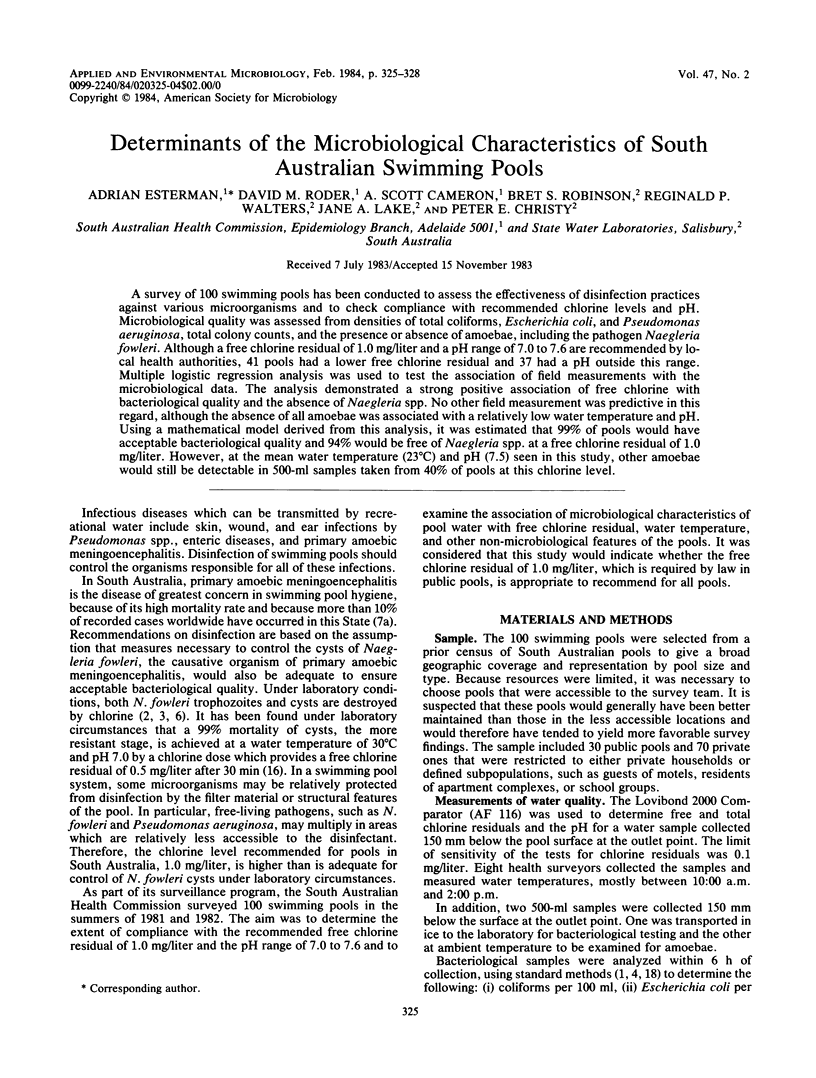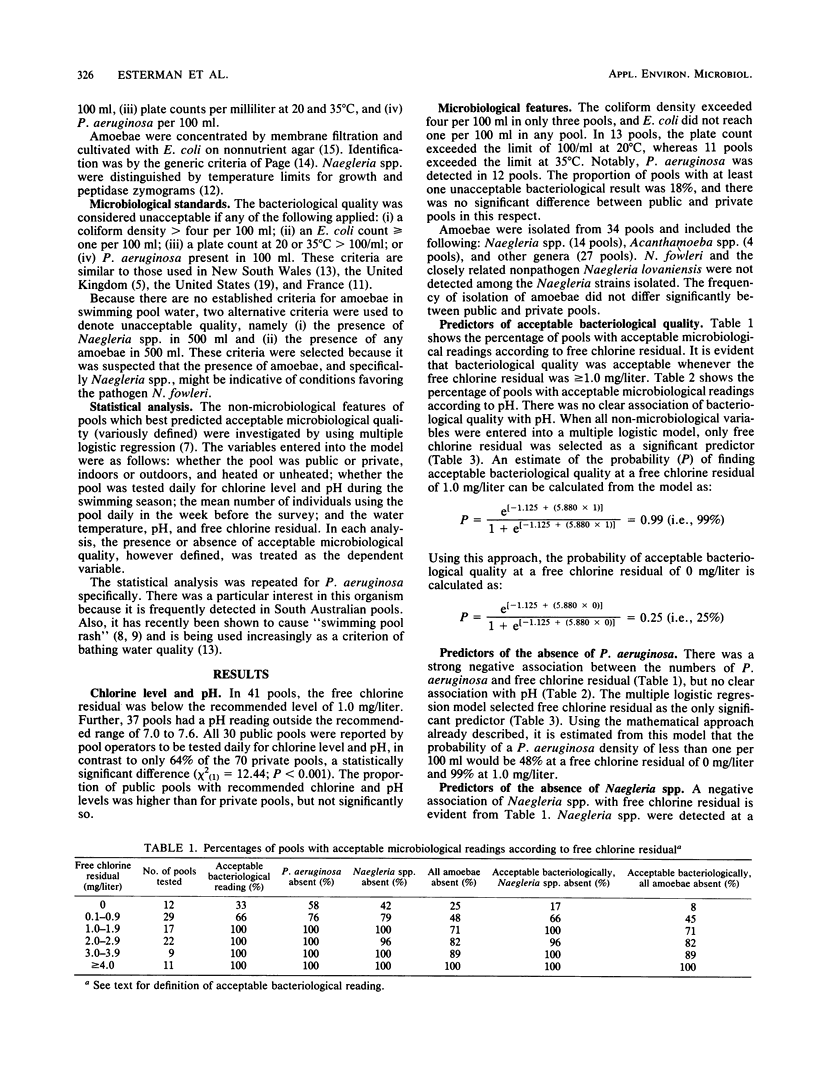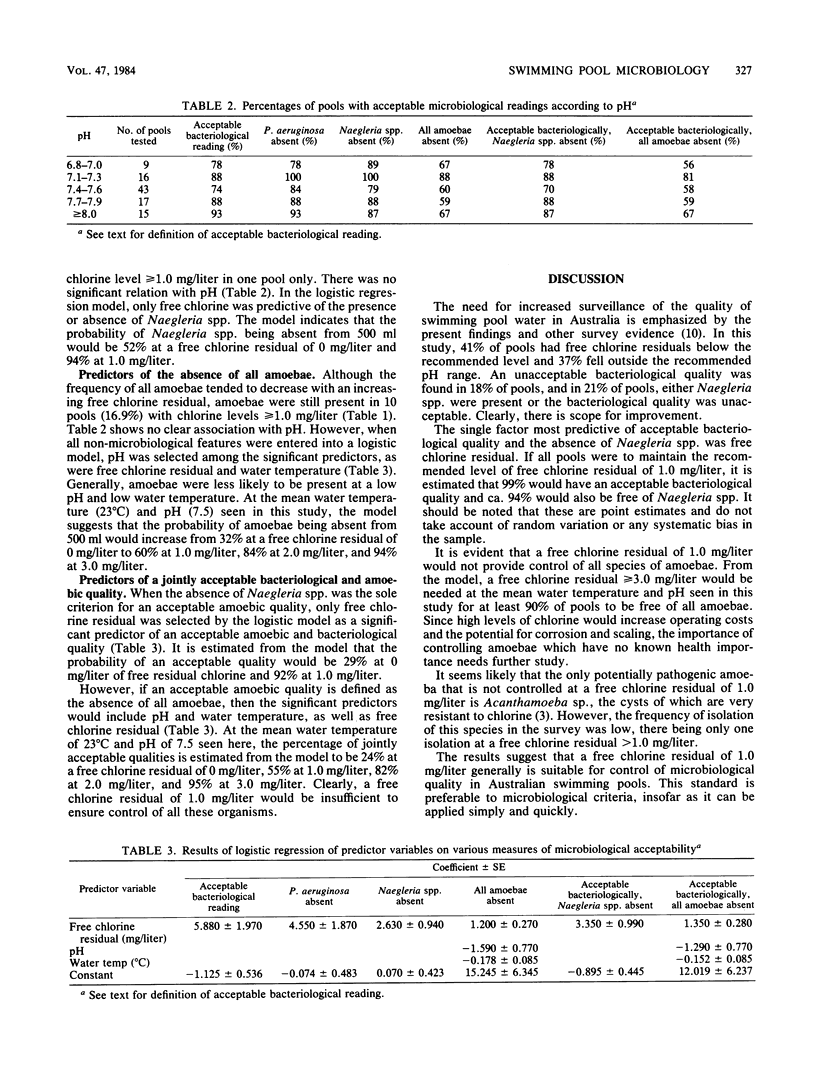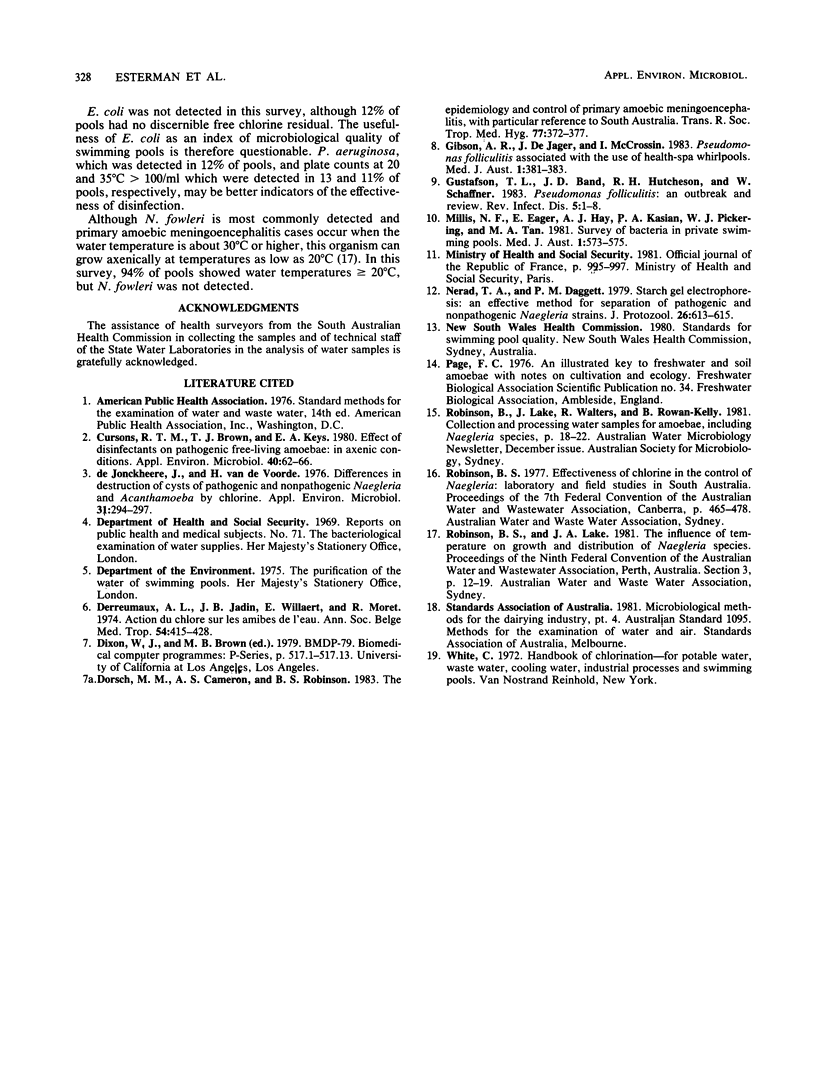Abstract
A survey of 100 swimming pools has been conducted to assess the effectiveness of disinfection practices against various microorganisms and to check compliance with recommended chlorine levels and pH. Microbiological quality was assessed from densities of total coliforms, Escherichia coli, and Pseudomonas aeruginosa, total colony counts, and the presence or absence of amoebae, including the pathogen Naegleria fowleri. Although a free chlorine residual of 1.0 mg/liter and a pH range of 7.0 to 7.6 are recommended by local health authorities, 41 pools had a lower free chlorine residual and 37 had a pH outside this range. Multiple logistic regression analysis was used to test the association of field measurements with the microbiological data. The analysis demonstrated a strong positive association of free chlorine with bacteriological quality and the absence of Naegleria spp. No other field measurement was predictive in this regard, although the absence of all amoebae was associated with a relatively low water temperature and pH. Using a mathematical model derived from this analysis, it was estimated that 99% of pools would have acceptable bacteriological quality and 94% would be free of Naegleria spp. at a free chlorine residual of 1.0 mg/liter. However, at the mean water temperature (23 degrees C) and pH (7.5) seen in this study, other amoebae would still be detectable in 500-ml samples taken from 40% of pools at this chlorine level.
Full text
PDF



Selected References
These references are in PubMed. This may not be the complete list of references from this article.
- Cursons R. T., Brown T. J., Keys E. A. Effect of disinfectants on pathogenic free-living amoebae: in axenic conditions. Appl Environ Microbiol. 1980 Jul;40(1):62–66. doi: 10.1128/aem.40.1.62-66.1980. [DOI] [PMC free article] [PubMed] [Google Scholar]
- De Jonckheere J., van de Voorde H. Differences in destruction of cysts of pathogenic and nonpathogenic Naegleria and Acanthamoeba by chlorine. Appl Environ Microbiol. 1976 Feb;31(2):294–297. doi: 10.1128/aem.31.2.294-297.1976. [DOI] [PMC free article] [PubMed] [Google Scholar]
- Derreumaux A. L., Jadin J. B., Willaert E., Moret R. Action du chlore sur les amibes de l'eau. Ann Soc Belg Med Trop. 1974;54(4-5):415–428. [PubMed] [Google Scholar]
- Dorsch M. M., Cameron A. S., Robinson B. S. The epidemiology and control of primary amoebic meningoencephalitis with particular reference to South Australia. Trans R Soc Trop Med Hyg. 1983;77(3):372–377. doi: 10.1016/0035-9203(83)90167-0. [DOI] [PubMed] [Google Scholar]
- Gibson A. R., De Jager J., McCrossin I. Pseudomonas folliculitis associated with the use of health-spa whirlpools. Med J Aust. 1983 Apr 16;1(8):381–383. doi: 10.5694/j.1326-5377.1983.tb99417.x. [DOI] [PubMed] [Google Scholar]
- Gustafson T. L., Band J. D., Hutcheson R. H., Jr, Schaffner W. Pseudomonas folliculitis: an outbreak and review. Rev Infect Dis. 1983 Jan-Feb;5(1):1–8. doi: 10.1093/clinids/5.1.1. [DOI] [PubMed] [Google Scholar]
- Millis N. F., Eager E., Hay A. J., Kasian P. A., Pickering W. J., Tan M. A. Survey of bacteria in private swimming pools. Med J Aust. 1981 May 30;1(11):573–575. doi: 10.5694/j.1326-5377.1981.tb135836.x. [DOI] [PubMed] [Google Scholar]
- Nerad T. A., Daggett P. M. Starch gel electrophoresis: an effective method for separation of pathogenic and nonpathogenic Naegleria strains. J Protozool. 1979 Nov;26(4):613–615. doi: 10.1111/j.1550-7408.1979.tb04206.x. [DOI] [PubMed] [Google Scholar]


